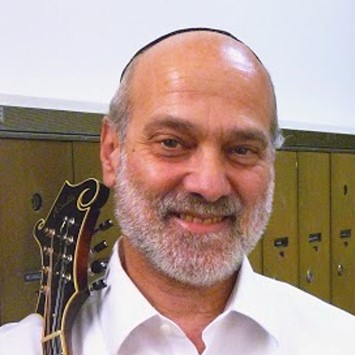A multifaceted instrumentalist, Andy Statman is known for live performances that defy all attempts at categorization. As the culmination of decades of creative development, his music expands the boundaries of traditional and improvisational forms.
In 2012, he received the National Heritage Award from the National Endowment of the Arts — the highest honor given to tradition-based musicians and artists in America. In the words of the New Yorker, “Andy Statman, clarinet and mandolin virtuoso, is an American visionary.”
Born into a family with a long line of cantors, composers and classical and vaudeville musicians, Statman grew up in Queens. His early musical memories include family get-togethers where the relatives danced to klezmer melodies, Tin Pan Alley and Broadway show tunes; his rabbi in an afternoon religious school singing Hasidic songs; 1950s rock; big band jazz, and classical music.
He started playing bluegrass when he was 12 years old and was soon performing with local bands at colleges, on radio, in clubs and on Sunday afternoons in Washington Square Park in Greenwich Village. At 17, after hearing avant-garde jazz saxophonist Albert Ayler, he began to study saxophone. Through his late teenage years, he played sax in free jazz, funk, rock and Chicago blues bands, while expanding his mandolin playing in similar directions. In 1970, he was part of the experimental bluegrass group Country Cooking. This was followed by a stint with David Bromberg’s band, and then he went on the bluegrass and folk circuit with the experimental group Breakfast Special.
Still seeking to broaden his horizons, Statman began to study and play Greek, Albanian and Azerbaijani music. In 1975, he sought out the legendary klezmer clarinetist and NEA National Heritage Fellow Dave Tarras. He became Tarras’ protégé, for whom the master wrote several melodies. Tarras wanted Statman to carry on his legacy and bequeathed four of his clarinets to the younger virtuoso.
In the late 1970s, Statman recorded his first albums, “Jewish Klezmer Music” with Zev Feldman and Marty Confurius, a recording that became a touchstone for the 1970s klezmer revival, and “Flatbush Waltz,” a mandolin masterpiece of post-bebop jazz improvisations and ethnically inspired original compositions.
As a clarinetist, Statman began to zero in on the sublimely ecstatic centuries-old Hasidic melodies at the heart of klezmer music — melodies that were part and parcel of the religious path he had come to follow. This led to his klezmer music influenced by the spiritually oriented avant-garde jazz of John Coltrane and Albert Ayler and other ethnic styles. In so doing, he created his own musical language.
Statman has appeared on more than 100 recordings, including 20 under his own name. His “Between Heaven and Earth” CD was picked as on of the Top 10 CDs of the Year by the New York Times. He has recorded and toured with the Grateful Dead, Bob Dylan, Dr. John, Ricky Skaggs, Bela Fleck, David Grisman, Itzhak Perlman, Vassar Clements, Stephane Grappelli, Paul Shafer, David Amram, Kenny Werner, Tim O’Brien, Mark O’Connor, Peter Rowan, Buell Neidlinger, Flaco Jiménez, Tony Rice, Byron Berline and Michael Cleveland, among others.
A Grammy nominee and recipient of grants from the NEA Fellowship and N.Y. Council of the Arts, Statman has been the subject of feature articles in the New York Times, New York Post, New York Daily News, Billboard, Rolling Stone, NPR, BBC, CNN, CBS, Village Voice, DownBeat, Jazziz, Fretboard Journal, Jerusalem Post and Jerusalem Report, among others He has performed at Carnegie Hall, Town Hall, Lincoln Center and the Met, as well as at major concert halls and festivals throughout the United States, Europe, Canada, Japan and Israel.
Statman gives master classes in colleges and music camps. He has written two instruction books on bluegrass mandolin and one on NEA National Heritage Fellow Jesse McReynolds, and has released a CD instruction series on jazz mandolin and a DVD on how to play klezmer music.
Please note: Biographies are based on information provided to the CSO by the artists or their representatives. More current information may be available on websites of the artists or their management.


